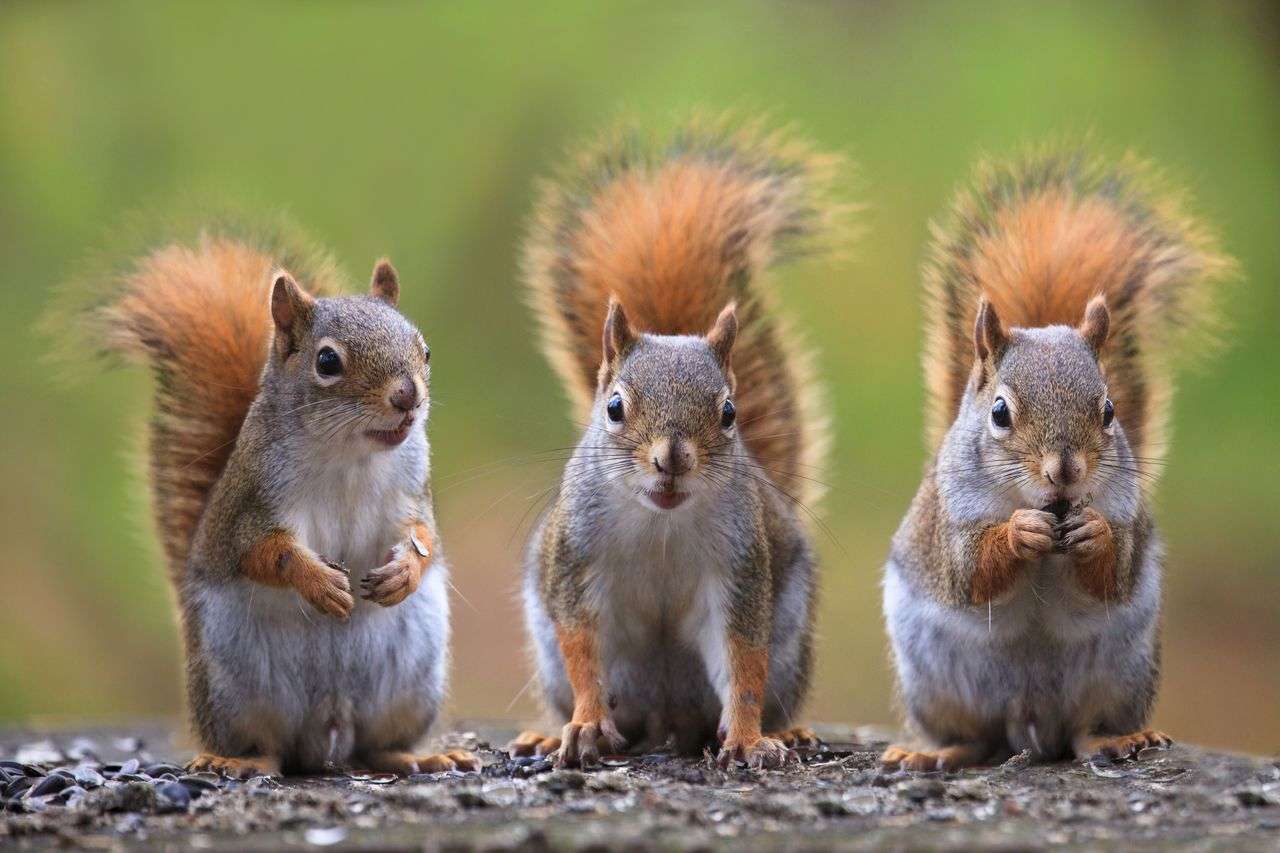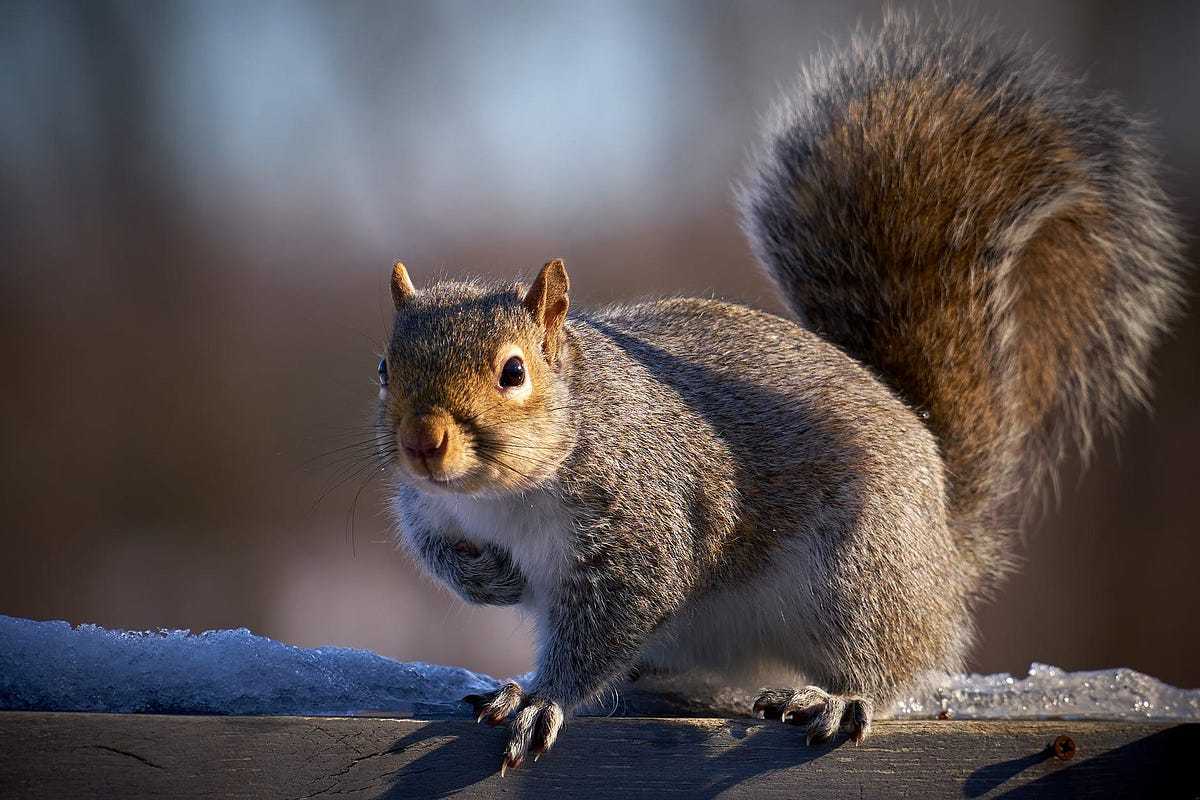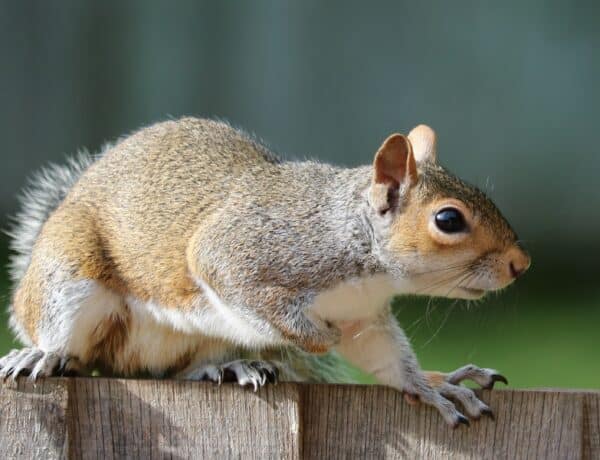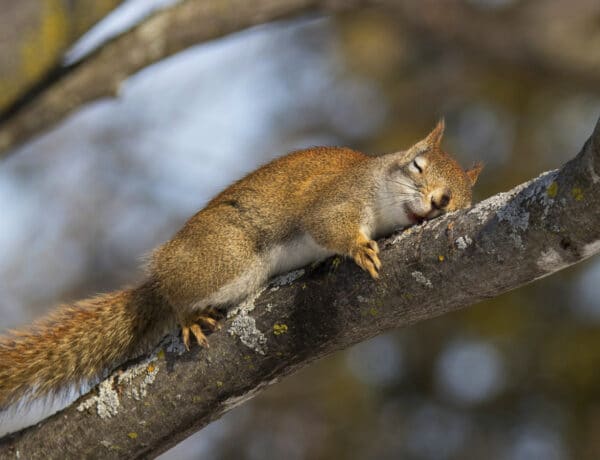Introduction
How Many Squirrels In A Litter: Squirrels are fascinating creatures that captivate our attention with their playful antics and nimble acrobatics. These small, bushy-tailed rodents are a common sight in parks, forests, and even urban neighborhoods, and they often leave us pondering various aspects of their lives. Understanding the reproductive patterns and family dynamics of squirrels is not only an intriguing aspect of their biology but also essential for their conservation and management. Squirrels captivity are members of the Sciuridae family, which includes tree squirrels, ground squirrels, chipmunks, and marmots.
While there are over 200 different species of squirrels distributed across the world, their reproductive habits tend to share some common characteristics. The number of squirrels in a litter can vary among different species and is influenced by factors such as the squirrel’s habitat, food availability, and the overall health of the mother squirrel. Typically, squirrels give birth to multiple offspring in a single litter, and these young squirrels are known as “kits” or “pups.” The number of kits in a litter can range from one to as many as eight, with three or four being the average for many species.
The reproductive cycle of squirrels generally follows a pattern. Female squirrels typically come into estrus, or heat, twice a once in the spring and again in late summer. After mating, the female will undergo a gestation period, which typically lasts around four to six weeks, depending on the species. Once the gestation period is complete, the mother squirrel will give birth to her litter of kits in a nest that she has constructed in a tree cavity, burrow, or even a cozy nook in an attic. The number of kits in a litter is influenced by several factors, including the age and health of the mother squirrel, the availability of food, and environmental conditions.

How long do baby squirrels stay with their mother?
The babies will be weaned at about 10 weeks of age and ready to leave the nest when they are around 12 weeks old. Healthy baby squirrels are sometimes found on the ground. They may not be orphans, but simply need to be given time to be reunited with their mothers.
Newborn Stage (0-6 weeks): Baby squirrels are born blind, hairless, and completely dependent on their mother for warmth, nourishment, and protection. During this initial phase, they are kept in the nest, which is typically a tree cavity, a cozy spot in an attic, or even a burrow. The mother diligently cares for her litter, providing them with her milk, warmth, and grooming. The exact length of this phase can vary among squirrel species, but it usually lasts for about 4 to 6 weeks.
Weaning and Learning (6-12 weeks): As baby squirrels grow, they begin to develop their fur, open their eyes, and their mother gradually them to solid foods. This weaning process is an essential step toward independence. The mother squirrel teaches her young ones how to forage for nuts, fruits, and other food sources. This phase can last anywhere from 6 to 12 weeks, depending on the species and environmental conditions.
Transition to Independence (12-16 weeks): By the time baby squirrels reach 12 to 16 weeks of age, they are typically weaned and have acquired the necessary skills to survive on their own. At this point, they leave the nest to establish their territories and find their own sources of food. Some species may leave earlier, while others may stay a bit longer if resources are abundant.
How many squirrels can a baby have?
Squirrels usually have 2-4 babies per litter.
However, they’re capable of having as many as 8 babies at a time. The baby squirrels are called “kits,” and each group of kits is called a “litter.” A female squirrel can have up to two litters per year.
Tree Squirrels: Tree squirrels, which include familiar species like the eastern gray squirrel and the red squirrel, typically have litters that range from one to eight kits. However, the most common litter size for tree squirrels is around three to four kits. The availability of food resources and the health of the mother squirrel can influence the size of the litter. Healthy adult female squirrels are more likely to have larger litters.
Ground Squirrels: Ground squirrels, such as the prairie dog and the groundhog, tend to have larger litters compared to tree squirrels. Litter sizes for ground squirrels can range from one to twelve or more, with an average of four to eight kits. These squirrels often live in social groups and benefit from communal care.
Chipmunks: Chipmunks are smaller members of the squirrel family and typically have smaller litters. A typical chipmunk litter consists of two to eight kits, with an average of four to five. Chipmunks tend to have fewer offspring compared to some larger squirrel species.
What do newborn squirrels eat?
What do baby squirrels eat? Formula, also called “milk replacer.” Pinkies less than 10 days old: Homemade Goat Milk Formula for 10 days, then switch to either Esbilac Puppy Milk powder, or Fox Valley 32/40, then switch to Fox Valley 20/50 by 4 weeks old.
Mother’s Milk: Like many mammals, newborn squirrels rely on their mother’s milk as their sole source of nutrition during the first weeks of life. Squirrel milk is rich in fats, proteins, and antibodies that help the kits develop and build their immune systems. It is the necessary calories to fuel their rapid growth. The milk is typically produced by the mother’s mammary glands, and she nurses her young multiple times a day.
Lactation Period: The duration of the lactation period can vary depending on the squirrel species and environmental conditions. On average, mother squirrels nurse their kits for about 6 to 8 weeks. During this time, the kits’ diet exclusively consists of milk.
Transition to Solid Food: As the kits grow and their bodies mature, they gradually transition from a diet of solely milk to solid foods. This transition typically begins when the kits are around 6 to 8 weeks old. Initially, the mother may soft, easily digestible foods, such as small pieces of fruits, nuts, or seeds, to supplement their diet. The transition to solid foods is an essential step toward weaning and eventual independence.
What do baby squirrels eat?
At about 6 weeks old your squirrel will be ready to start nibbling on solid food. These foods may include kale, broccoli, apples, grapes, sweet potato, and hard-shelled nuts out of the shell and a good quality rodent diet.
Mother’s Milk: During the first few weeks of life, baby squirrels are entirely dependent on their mother’s milk for nutrition. Squirrel milk is rich in fats, proteins, and essential nutrients that support their rapid growth and development. They nurse frequently, typically every few hours, to get the necessary nourishment.
Transition to Solid Foods: Around the age of four weeks, baby squirrels start to explore solid foods as they begin to wean. The mother may soft and easily digestible foods to her offspring. These can include small pieces of fruits, vegetables, nuts, and seeds.
Learning from the Mother: Mother squirrels play a vital role during this phase, teaching their young how to forage for food. Kits observe and learn by imitating their mother’s eating habits and food choices. This learning process is essential for their survival skills.
Expanded Diet: As baby squirrels continue to grow, they gradually transition to a more varied diet, expanding beyond soft foods to include a wider range of nuts, seeds, fruits, and vegetation. Their diet becomes more like that of adult squirrels.
Can you touch a baby squirrel?
If you confirm the found squirrel is an infant, carefully examine it for any injuries or infections. Use towels, cloths, or gloves to handle the animal — you do not want to leave your scent on the young one. If possible, use a warm cloth or towel to care for the baby.
Potential for Harm: Baby squirrels are delicate and vulnerable. Handling them improperly or without the necessary expertise can result in unintentional harm. Their bones are fragile, and their bodies can easily be injured if mishandled.
Risk of Disease: Squirrels, like all wild animals, can carry diseases and parasites. Coming into direct contact with a baby squirrel may put you at risk of exposure to zoonotic diseases (diseases that can be transmitted from animals to humans). It is essential to exercise caution and, ideally, wear gloves if you must handle a baby squirrel.
Stress and Abandonment: Mother squirrels are highly attentive to their young. If you touch a baby squirrel, your scent may transfer to the kit, and this can lead to the mother rejecting the baby. Squirrels have a keen sense of smell, and they rely on scent to recognize their offspring. If they detect a foreign scent on their baby, they may perceive it as a threat and abandon it.
How many times does a squirrel get pregnant?
Grey squirrels have two breeding periods per year, one in mid-summer and another in early spring. Young are usually born between March and April, with a second litter arriving around July or August. Females may give birth to one to nine babies at a time, though somewhere in the range of three to five is typical.
Spring and Late Summer/Fall: Squirrels in temperate regions typically have a primary reproductive season in the spring (usually from late winter to early spring) and may have a secondary season in late summer or early fall. The primary season ensures that the young are born when food resources are abundant, which increases their chances of survival.
Gestation Period: The gestation period for squirrels varies by species but generally lasts around four to six weeks. After mating, it takes this amount of time for the female squirrel to give birth to a litter of baby squirrels.
Litter Size: The number of babies in a squirrel litter varies among species and individual circumstances. Tree squirrels typically have litters that range from one to eight kits, with three or four being the average. Ground squirrels, on the other hand, may have larger litters, often ranging from four to twelve or more.
Do squirrels have rabies?
Small rodents (like squirrels, hamsters, guinea pigs, gerbils, chipmunks, rats, and mice) and lagomorphs (including rabbits and hares) are almost never found to be infected with rabies and have not been known to transmit rabies to humans.
Rabid Animal Exposure: Squirrels can become infected with rabies if they are bitten or scratched by a rabid animal. In urban and suburban areas, the primary concern is often rabies in wildlife like raccoons or bats. If a squirrel were to be bitten by a rabid animal and become infected, it could potentially transmit the virus to other animals or humans through its saliva.
Behavioral Changes: One of the classic signs of rabies in animals is a change in behavior. Rabid animals may display aggressive or unusual behavior, such as unprovoked aggression, disorientation, or paralysis. However, these signs are not exclusive to rabies and may also be caused by other illnesses or injuries.
Vaccination and Public Health: In regions where rabies is a concern, pet owners are encouraged to vaccinate their pets, including cats and dogs, which can come into contact with wildlife. Public health authorities monitor and respond to cases of rabies in the community, which includes testing and control measures to prevent its spread.
Can I give water to a baby squirrel?
The only fluids that should ever be offered to a baby squirrel are rehydration formulations for human infants, such as Pedialyte or a milk replacement formula appropriate for squirrels (such as Fox Valley Day One). Inappropriate fluids will make dehydration worse and/or cause life-threatening diarrhea.
Specialized Care: Baby squirrels have specific dietary and hydration needs, and their care can be quite delicate. Wildlife rehabilitators and veterinarians who specialize in treating squirrels have the and experience to them with the appropriate care, including hydration.
Risk of Aspiration: Baby squirrels can aspirate (inhale) water easily, which can lead to serious respiratory issues or pneumonia. Giving water to a baby squirrel without proper training and equipment can inadvertently harm the animal.
Proper Hydration: Baby squirrels typically receive the necessary hydration from their mother’s milk during the first few weeks of life. As they transition to solid foods, they gradually obtain moisture from those foods. Wildlife rehabilitators ensure that the diet they includes the appropriate moisture content to keep the squirrels hydrated.
Monitoring for Dehydration: If you find a baby squirrel that appears to be dehydrated or in distress, it is best to contact a wildlife rehabilitator immediately. They can assess the squirrel’s condition and the necessary care, which may include rehydration if deemed necessary.

Conclusion
The number of squirrels in a litter is a variable and intriguing aspect of these small, charismatic rodents’ lives. While the exact number of kits in a squirrel litter can vary widely among different species and individual circumstances, it is clear that they have evolved remarkable adaptations to maximize their chances of survival in diverse environments. Squirrels’ reproductive strategies are finely tuned to the challenges of their habitats, and they exhibit remarkable flexibility in response to changing conditions. The factors influencing litter size, such as maternal age, health, and food availability, reflect the delicate balance between the resources needed to support a growing family and the pressures of a sometimes unpredictable natural world.
Observing these adaptable creatures, we can appreciate their habitats and ensure their continued well-being. As urbanization and habitat destruction continue to encroach upon their environments, it becomes crucial to find ways to coexist with these industrious animals. Suitable squirrel nests sites and maintaining healthy ecosystems are vital steps in supporting squirrel populations. The study of squirrel reproductive patterns extends beyond mere curiosity. It offers insights into broader ecological principles and highlights the interconnectedness of all species within an ecosystem.
These rodents adapt to changing conditions can inform our understanding of ecological resilience and the impacts of environmental change on wildlife. As we seek to protect and conserve these animals, we not only ensure the survival of a diverse and fascinating group of creatures but also contribute to the preservation of the ecosystems in which they play a crucial role. Whether they’re scampering through city parks or darting through the branches of a forest, squirrels continue to captivate our imaginations and inspire us to cherish and protect the fragile tapestry of life that surrounds us.




No Comments